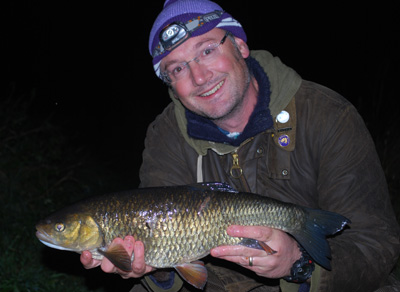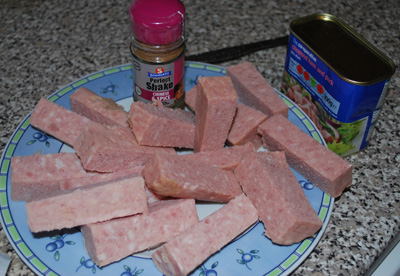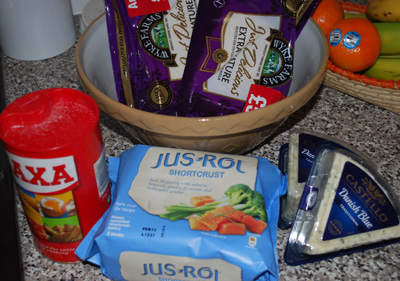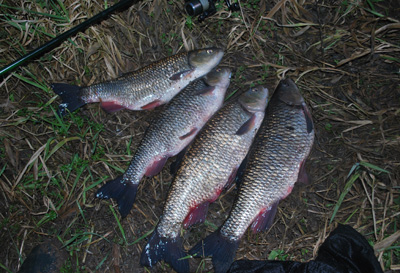With winter very slowly approaching we are now entering what, for many, should be the start of a chubbing campaign. But as I write this my local rivers are still very low with little or no flow and this has been the case for a number of months now so I have had to adapt my approach to keep the fish coming. It has been a very strange year; when you consider that this summer was the driest in living memory and now it has been followed by a very mild autumn conditions could not be considered perfect for most rivers around the country and nowhere more so than in Suffolk! I would not be surprised if the weed remains thick until Christmas at this rate.
A passion is born.
Winter chubbing is normally marked by the first sharp frosts and the floods that clear the river bed of weed and debris. Various items of woollen items from Christmas’s past are once again dug out from the backs of cupboards. The river is transformed into a jade green ribbon struggling to be contained between banks fringed with the burnt biscuit colours of reeds and vegetation now passing into decay. Canopies of flotsam and jetsam collect around the trailing branches of willow branches that in summer barely kissed the river surface.
I just simply adore the river at this time of year. This is the time when chub are at their fittest and approaching their peak weight. If lucky enough to find the river fining down after flood and approaching near ideal conditions my heart can be felt pumping out of its chest in anticipation.
I don’t know what it is about chub that I find so captivating, but for over twenty years they have become an all-consuming passion. I think the first embers were lit after having read an article by Matt Hayes in Angling Times describing his approach to catching chub from small streams.
I had known for a number of years that chub existed on my local rivers – indeed I had caught countless chublets and even fish that in my youth made me gasp – perhaps fish approaching 2lb! But diligently following this enthusiastic Brummie’s advice of using bread flake and casting to visible fish I proceeded to hook into a then leviathan of well over 4lb.
In my haste to land it, I played it far too hard and lost it in the margins when, in true chub style, it ploughed into near bank reeds and did me the favour of unhooking itself before we could become properly acquainted on the river bank…
 To begin with my approach was very heavily influenced by what many now consider to be the ‘bible’ of chub fishing in the form of Tony Miles’ book ‘Search for Big Chub’. In the beginning it was at times a frustrating journey as I served an apprenticeship on a river that was never really known for producing fish of any calibre but slowly I began to transform knowledge into experience on the bank and started to land fish that further fuelled my passion for this captivating and enigmatic species.
To begin with my approach was very heavily influenced by what many now consider to be the ‘bible’ of chub fishing in the form of Tony Miles’ book ‘Search for Big Chub’. In the beginning it was at times a frustrating journey as I served an apprenticeship on a river that was never really known for producing fish of any calibre but slowly I began to transform knowledge into experience on the bank and started to land fish that further fuelled my passion for this captivating and enigmatic species.
I can recall as if it were yesterday my first chub over 5lb. In contrast to the four pound fish I had started to make regular acquaintance with its stature looked goliath-like in comparison to its smaller companions. Its broad shoulders and gargantuan mouth set this fish very much apart from the others I had caught. This was very much a specimen in its prime, caught on a cold October night on a cube of luncheon meat and even to this day I feel still feel the same ecstasy at catching fish of this size from what has now become, to me, a very special river.
It has always been a very solitary passion – this is no river with a specialist following; indeed it is rare to share the bank with another angler. So in this near private paradise my obsession grew and was finally rewarded with a 6lb 4oz chub. Capturing this fish felt very much like a graduation – nationally insignificant these days, but personally a goal set and achieved! The only problem now is that I am now driven to catch a Suffolk 7! I can only imagine that it will happen one day – or else insanity!!!!
I think in terms of inspiration I can sum up my chub obsession as Matt Hayes lighting the tinder which, in reality, was probably provided by Bernard Venables’ creation Mr Crabtree and his little upstart, Peter. Tony Miles chucked a few logs on the fire and joining the Chub Study Group was like lobbing on a few Molotov cocktails!
So how do I go about this madness called chub fishing?
Winter baits.
These can only be a personal selection as the baits that have potential to capture Mr Chevin are legion, but I have complete faith in this selection in terms of consistency – but I by no means limit myself! I have an opinion that far more important than the type of bait, is its application. On less pressured waters if you find chub in a feeding mood, gain their confidence and offer something edible – they will find and eat it!
The other consideration is hook size – it must match the size of the bait. I have no qualms about fining down to a size 16 for bread punch, or indeed a size 2/0 for a monster sized piece of flake – trust me, a bait taken readily!!! I don’t really want to expand upon bread and its uses other than to refer you to a previous article entitled ‘Desert Island Bread’.
 Luncheon meat: has always been successful and has continued to work in its different guises year on year. The only problem is its general appeal and it will just as easily attract the attention of nuisance species such as river carp, barbel and, more recently, a run of pike to 13lb 4oz.
Luncheon meat: has always been successful and has continued to work in its different guises year on year. The only problem is its general appeal and it will just as easily attract the attention of nuisance species such as river carp, barbel and, more recently, a run of pike to 13lb 4oz.
Preparation is simple; cut the lump of meat lengthways down the centre, then four equal cuts crossways to give eight chunky strips of meat. I prefer to use the blunt back of a knife, which gives a fluffy surface to the strips which increase the surface area allowing more flavour leakage. If you wish to further enhance the meat; simply coat the inside of a plastic bag with a small amount of chosen liquid flavour, chuck the meat in and give it a shake. At this moment in time, I have a preference for powdered flavours and spices from the supermarket in the form of various curry powders or seasonings.
The benefit of preparing meat in strips is that you can break off irregular shaped chunks of meat. I have great faith in using a daisy chain of meat on the hook. Just coarsely break off two or three smallish ‘cubes’ of meat, thread onto a baiting needle and then feed over a size 6 or 4 forged specimen hook. It may look large and ungainly – it is – but hooking meat in this way has definitely increased my hook up ratio, possible due to the hinge action that is achieved.
 Cheese paste: The subject of much myth and lore, in reality it is a very simple bait to prepare. Ingredients include equal quantities of frozen shortcrust pastry, mature Cheddar cheese and Danish Blue. I use an old Mrs Beaton style mixing bowl; grate the frozen pastry, Cheddar and Danish Blue and leave the pastry to thaw slightly. Mixing by hand ensures all of the ingredients are thoroughly kneaded together to form a uniform paste.
Cheese paste: The subject of much myth and lore, in reality it is a very simple bait to prepare. Ingredients include equal quantities of frozen shortcrust pastry, mature Cheddar cheese and Danish Blue. I use an old Mrs Beaton style mixing bowl; grate the frozen pastry, Cheddar and Danish Blue and leave the pastry to thaw slightly. Mixing by hand ensures all of the ingredients are thoroughly kneaded together to form a uniform paste.
Fresh, or rancid – cheese paste works just the same. As I have to come home at night and get in bed with the Mrs I prefer fresh! The smell is easier to shift in just one shower and the chub don’t seem to mind one jot.
There is a common problem with cheese paste in that it hardens in cold water conditions. An easy way to overcome this is to add a teaspoon of glycerine to a tangerine sized ball of paste, thus ensuring the paste remains soft enough for the hook to pull on the strike.
Winter tactics.
There are certain features that winter chub seem to adore – some are obvious, others are quite discreet and easy to overlook. Typically chub location changes with the seasons and in winter deeper stretches once devoid of fish seem to offer advantages over the streamier sections usually preferred by chub in the height of summer.
By far my favourite big chub features are steady glides on stretches downstream from a bend. Even the smallest features in the form of a small bushes or a clump of dead reed bed should not to be overlooked. If at all possible, I look for smooth water and avoid ‘boily’ sections of the river.
It helps if you try and think like a chub – or at least view the river from the perspective that fish will always try and find station where they do not need to waste energy, but from where they can still access food. Creases are almost like the lanes on a motorway; chub will happily sit at the edge of the fast water and intercept food as it passes by in the main current.
 The most obvious chub feature has to be the raft swim and without doubt my approach here remains, to this day, heavily influenced by Tony Miles. Rafts do attract a good head of fish but this is in part the problem and having observed groups of chub feeding in summer it is easy to see why.
The most obvious chub feature has to be the raft swim and without doubt my approach here remains, to this day, heavily influenced by Tony Miles. Rafts do attract a good head of fish but this is in part the problem and having observed groups of chub feeding in summer it is easy to see why.
Typically the smaller more agile fish will rush out and intercept items well before their larger more cautious companions! The biggest error here is to start fishing straight away. My standard approach is to feed bread mash and a few free offerings of cheese paste or luncheon meat some 20ft upstream of the raft and then let the swim rest for half an hour.
Before commencing my fishing I deposit a smaller quantity of bait so that it falls within the safety of the raft and washes through and behind the raft feature. This way it is possible to first fish well upstream of the raft and then get a second chance by fishing not up to, but rather behind the raft in the slack water and, typically, this is where you expect to catch the bigger fish.
Bite indication.
Chub have a reputation for being finicky feeders, capable of testing and rejecting bait with nothing more than a quick deflection on a quiver tip but these days I do not experience anything like the number of missed bites I did in the early days and most sessions nearly all detectible bites are translated onto fish on the bank.
On reflection I think my early failures were probably due to using too much lead, either in the form of a running Arlesey Bomb or a link ledger with too many swan shot. I think this problem is more pronounced on slow moving rivers as chub have too much time to inspect, test and examine baits. If you observe fish feeding in clear water it is quite common for them to approach a food item a number of times prior to committing itself! The key is to keep resistance to an absolute minimum so when it is picked up it behaves as naturally as possible. I used to think chub avoided thick line but in many cases this is irrelevant – far more important is resistance and I have had chub pick up baits confidently using 12lb line!
There are a number approaches to detecting bites; quiver tip, bobbin, touch ledgering or watching the line for any discernable movement. I could add another that has accounted for some exceptionally cagey fish, and that is to fish with an open bail arm and watch for the line coiling from the spool. When you get a ‘take’ it is much like a pike run and is treated in much the same way: close the bail arm, tighten into the fish and strike! Each has its merits.
I should perhaps explain the reason for fishing an open bail arm. There are times when a chub will intercept a bait and carry it some distance before ‘committing’ itself. I was fishing my usual approach of quiver tipping and was getting unhittable bites and the bites kept on coming, in fact the third time it took the bait on the drop – and once again I missed on the strike. As I fully expected a bite on the fourth cast – I left the bail arm open and watched for the fish taking line and it was fascinating to see the line skating towards an old weed bed… This fish had been holding station in the weed and was coming out to intercept the bait and then returning to its sanctuary where it felt safe and was hooked after I gave it more time.
Balanced leads: It never cease to amaze me how little lead is actually needed to effectively fish a bait. If at all possible I have a preference for freelining using a quiver tip and after casting and allowing the bait to settle I draw it back a little to ensure it has landed cleanly and to introduce a little slack; the slack effectively slows the bite down.
Holding the rod in hand the first sign of a bite is a sudden jolt transmitted as a sensation down the rod, followed by the tip pulling round. The advantage of free lining is that provided you ‘feather’ the bait down on the cast – it sounds exactly the same as the free offerings the chub will have been feeding on. Where there is little flow to carry a scent I suspect chub will easily detect the sound of potential food entering the river and investigate closer and it has to be an edge if your bait sounds exactly the same as the free offerings!
Upstream ledgering: If I have to use any amount of lead to hold bottom there is much to be gained from upstream ledgering. The aim of upstream ledgering is to balance the amount of lead used so that having cast upstream and allowed the bait to settle, after carefully tightening up to the link ledger, the quiver tip should show a deflection of 1 or 2 inches. Any more than this and the whole lot is washed downstream in the flow.
Getting it right does take a little trial and error but with practise it is possible to gauge the amount of lead using a combination of shot on the link. When the chub picks up or tests the bait it will drift downstream, relaxing the tension on the tip, showing the bite. Typically I experience an upstream ‘tug’ just before the tip collapses leaving me in no doubt that a fish has picked up the bait.
Downstream ledgering: The most sensitive method of downstream ledgering is to cast across and slightly downstream and let a bow form in the line. Once again the lead has to be balanced so that when a fish picks up the bait the pressure from the flow on the line releases and reduces the pressure on the terminal tackle.
Bobbin: In many ways fishing a bobbin has many advantages over the tip especially when freelining. The only problem is finding a bobbin that is light enough and I use the Solar lightweight bobbins, into which I insert a beta light for night fishing. A length of old fly line makes up the tether and works superbly. It can, of course, be used for upstream or downstream ledgering and in fact this method is far superior for showing drop back bites; the bobbin just plummets as the fish swims back downstream.
Are you seeing every bite? Not one of the methods above really answers all of the questions posed by chub, indeed I believe there are bites that are to all purposes undetectable! On a number of occasions I have retrieved my bait, only to find resistance and on the strike a fish that had just been sitting with the bait in its mouth.
Another occasion whilst fishing an open bail arm, I noticed line slowly peeling from the spool. Holding my finger on the spool I watched the quiver tip for a deflection – there was none. I released my finger and once again line slowly peeled from the spool. I suspected that perhaps some debris had hit the line and was drifting downstream but on releasing the line a fourth or fifth time I decided for whatever reason that it was moving faster than the current and decided to strike. To say the chub I hooked into was surprised was an understatement – but having taken maybe 4 meters of line, it took itself into a nearby reed bed and unhooked itself…Charming!
As you can gather from my approach to chubbing I am clearly not ‘normal’. I put it down to the way chub can drive you insane at times, but if you consider Einstein’s definition of insanity: ‘Insanity: doing the same thing over and over again and expecting different results’.
Einstein continued, ‘By that definition, a lot of us are mad. But it’s those times when we try something different, when we’re sane, that progress is made’.
Therefore the problem to good chubbing is trying to stay sane – and I guess I am just about hanging in there!










